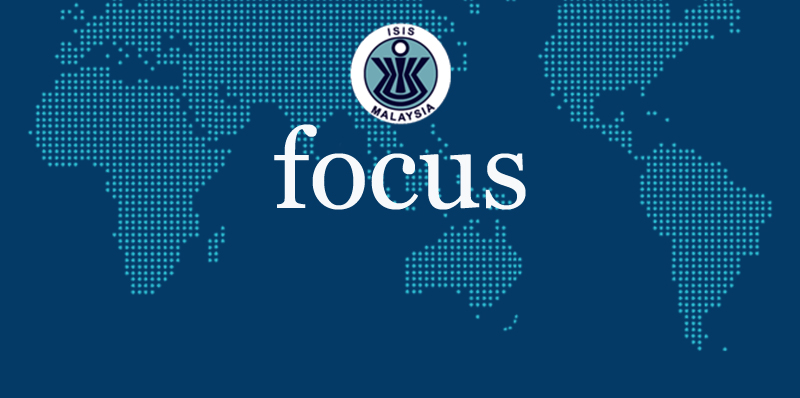Cambodia has been doing relatively well in its fight against the COVID-19 pandemic. However, more regional and international cooperation is needed, especially since the struggle does not seem to be abating soon.
BY CHARADINE PICH
13 February 2020 marked a historical humanitarian moment in the decision of the Cambodian government to allow the Westerdam ship to dock at the Sihanoukville Port. The Dutch-American cruise ship had previously been denied entry into Japan, the Philippines, Taiwan, Thailand and Guam – out of the fear that the COVID-19 virus was on board. The World Health Organization (WHO) highly appreciated the decision and praised it as an ideal example of an international solidarity amidst the hard time we are facing together.
So far, Cambodia has 122 infected cases with 121 recoveries, leaving only one still hospitalised as of 12 May. A majority of these were imported cases. At the time of writing, Cambodia has reported zero new cases for the last few weeks. This is a positive development, although the WHO still considers Cambodia to be at high risk of community transmission. As a result, the government has warned the public to remain vigilant and to exercise extra caution.
Cambodia has never been placed in a mandatory lockdown before. What are some of the government’s policies and responses that can enable it to contain the virus’ spread? What are some of the collaborative efforts with external partners to assist Cambodia in fighting this pandemic? What are the implications and setbacks?
Prompt measures and responsive policies
When the COVID-19 infection rate spiked in early March, the government ordered the closure of schools, universities and entertainment areas as well as limited social gatherings. Although the country attempted to maintain a business as usual scenario, people were urged to stay home and avoid unnecessary outings. Additional measures include suspending foreign visas, declaring a state of emergency, cancelling new year celebrations, ordering a temporary restriction of movement and allocating more economic resources to the health sector.
So far, the government’s proactive policies have proven to be effective in containing the spread of the virus as well as curbing the social panic. As the saying goes, prevention is better than cure. As of 3 May, more than 12,304 tests had been conducted, according to the Centres for Disease Control and Prevention (CDC) of the Ministry of Health (MoH). The government has also gathered different resources to execute its responsive measures including the US$20 million of World Bank credit as well as donations of medical supplies and protective equipment from China, Japan and Vietnam. Moreover, the Jack Ma Foundation and Alibaba Foundation of China donated 20,000 test kits to Cambodia, as well as other medical equipment. Additionally, France has just committed EUR400,000 to support three research projects on COVID-19 pandemic in Cambodia.
Following Prime Minister Hun Sen’s announcement on 1 April to donate his seven-months’ salary (worth around US$17,000), other officials have followed suit and that has seen a dramatic increase in state budget reserve allocated to fight the pandemic. The crowdfunding campaign collected a large sum of donation from the wider public and private sector alike, signifying a large-scale social solidarity as one “Khmer family”.
Cambodia and regional responses: Cooperative efforts and the loopholes
On regional platform, a Special ASEAN Plus Three Summit on COVID-19 was conducted on 14 April via video conference. The joint statement issued a call for closer cooperation on the early-warning systems for pandemics and disease outbreaks, securing adequate funding and the exchange of best practices in the joint fight against this pandemic crisis. Indeed, we are facing the imperative to balance between national leadership and international solidarity, national boundary and borderless sentiment, as well as national sovereignty and regional collaboration.
During the recent ASEAN virtual summit on COVID-19, Prime Minister Hun Sen urged ASEAN Member States to provide support to each other including the sharing of resources, techniques, medical equipment and supplies. Cambodia also supports the establishment of a COVID-19 ASEAN Fund.
We are cognisant of the fact that the pandemic is not showing signs of abating anytime soon. Cambodia has been equipped with necessary supplies and medical frontliners, although their quantity would not be sufficient in the case of a larger-scale outbreak. That is why the MoH and relevant key agencies have tried their best to prevent a second wave of outbreak.
Nevertheless, a more proactive regional response is needed. There ought to be a strong leadership in this regard whereby serious initiatives and key project implementations are being rolled out such that ASEAN as a whole can come together as one. There is a shortfall in “we vs them” scenario where countries are forced to close borders to contain the spread of the virus.
What would the post-COVID-19 society look like in Cambodia? Will there be a change in the regional and international order? How would the future economies of scale and global supply chain be adjusted afterward? Would international institutions go through dramatic change, or would they stay the same? These are big questions that remain unanswered.
Charadine Pich is Deputy Director of the Cambodian Institute for Cooperation and Peace (CICP) and Coordinator of the Global Center for Mekong Studies (GCMS-Cambodia Center, a Track Two think tank network of Lancang-Mekong Cooperation); she also serves as Advisor to the Ministry of Foreign Affairs and International Cooperation of the Kingdom of Cambodia





